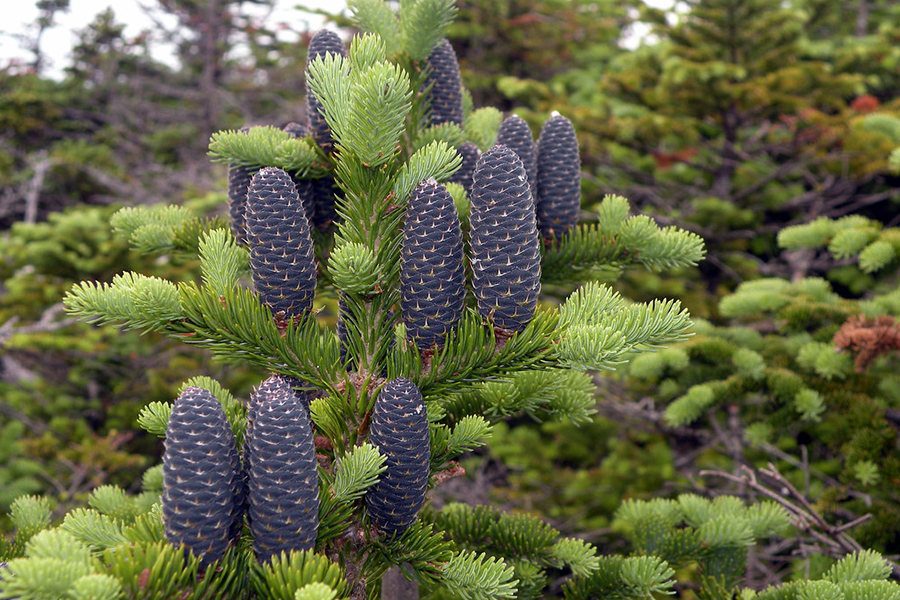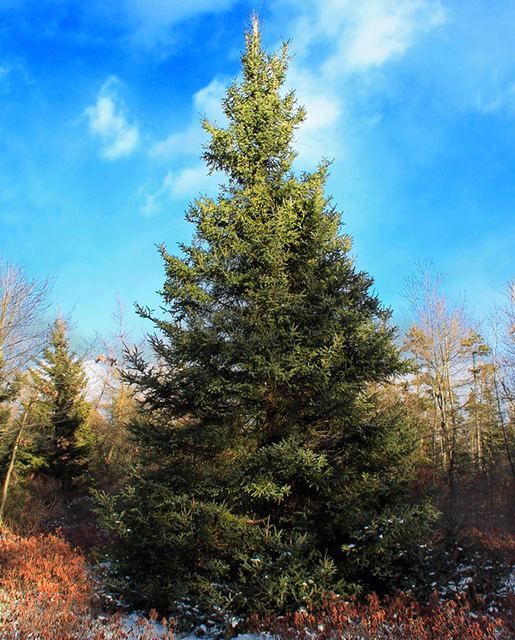Abies balsamea
Balsam fir is an evergreen tree native to the northeastern United States and eastern Canada. The most fragrant of all the firs, balsam fir is a popular choice for Christmas trees in the United States.
Location
The balsam fir can be found on just off the insection between the facility service road and the portion of the East-West trail running along Lovell Street.


History at Hadwen
There are no records of the balsam fir being planted by Hadwen at the arboretum but Hadwen cultivated many types of conifers and praised ” their symmetry of form and varying shades of everlasting green.” It is unclear how the single specimen of balsam fir was established at the arboretum, as no records of it exist until 2020.
Keep Learning
Detailed Species Information
Balsam fir is an evergreen tree in the family Pinaceae native to central and eastern Canada and the northeastern United States. A medium-sized tree, the balsam fir will typically reach between 26–66 feet (14–20 meters) in height. The tree forms a dense, conical crown with a straight trunk. Younger trees have smooth bark which becomes rough and scaly with maturity. The leaves of the balsam fir are dark green, flat needles that are about an inch in length. The dense cones stand upright on the branches and are dark purple or brown, containing winged seeds.
These trees can be found in a variety of environments, including swamps, forest slopes, and mountainsides, but they require cold and moist climates. The foliage and seeds of the balsam fir are an important food source for many small mammals, deer, and birds.
The balsam fir was used for various medical purposes by indigenous peoples, including Abenaki, Algonquin, Iroquois, Maliseet, Cree, Ojibwe, Penobscot, and others. The balsam fir is also an extremely popular variety of Christmas tree due to its iconic shape, deep green needles, and its fragrance, which is stronger than other fir trees. In landscaping, the balsam fir is used as an ornamental in parks and gardens but requires cooler temperatures or shady planting sites. It is widely cultivated, including various dwarf species.
